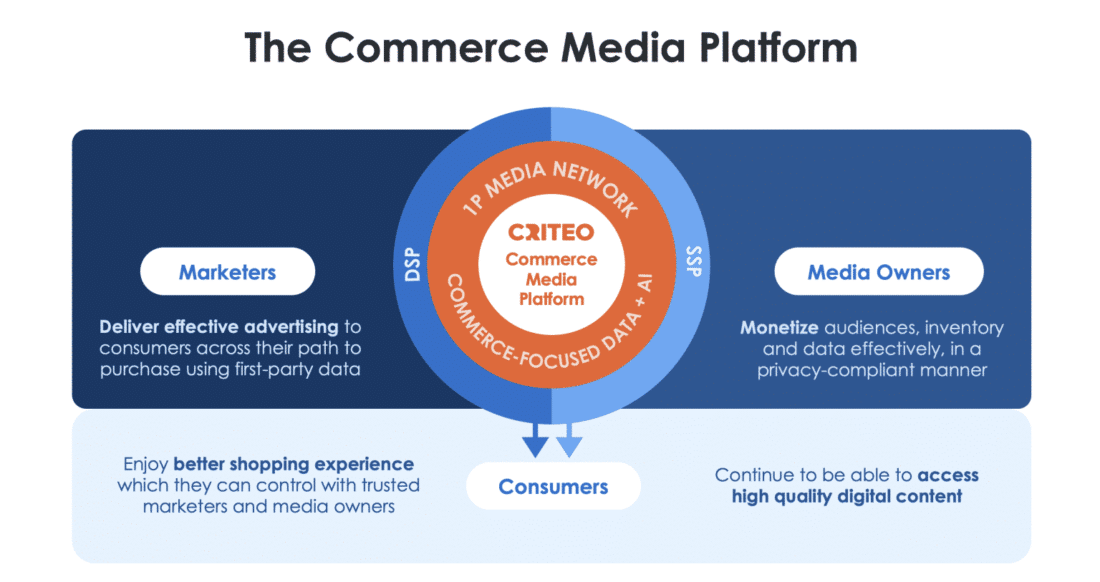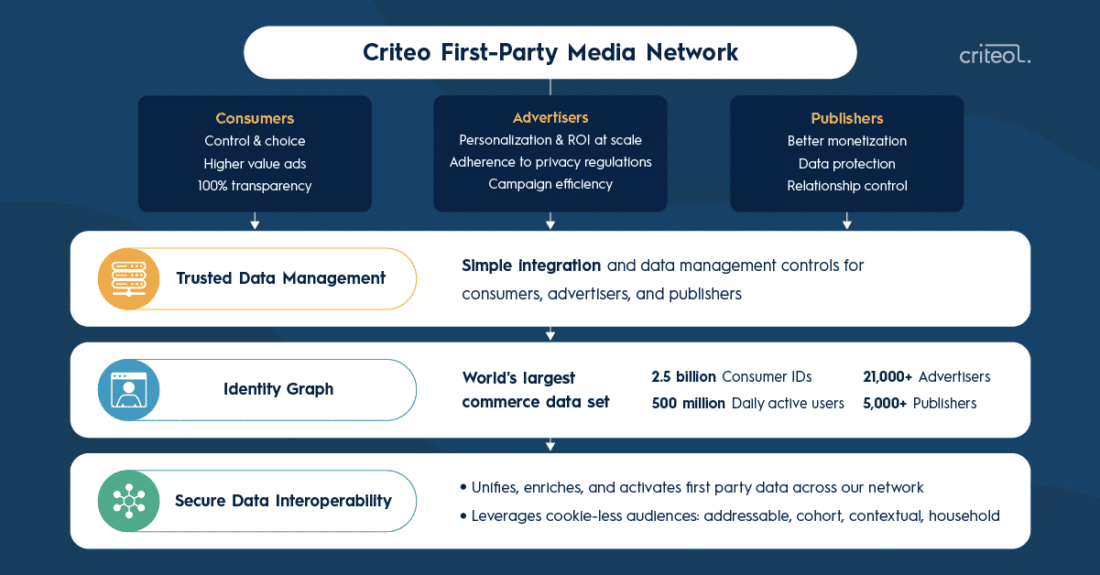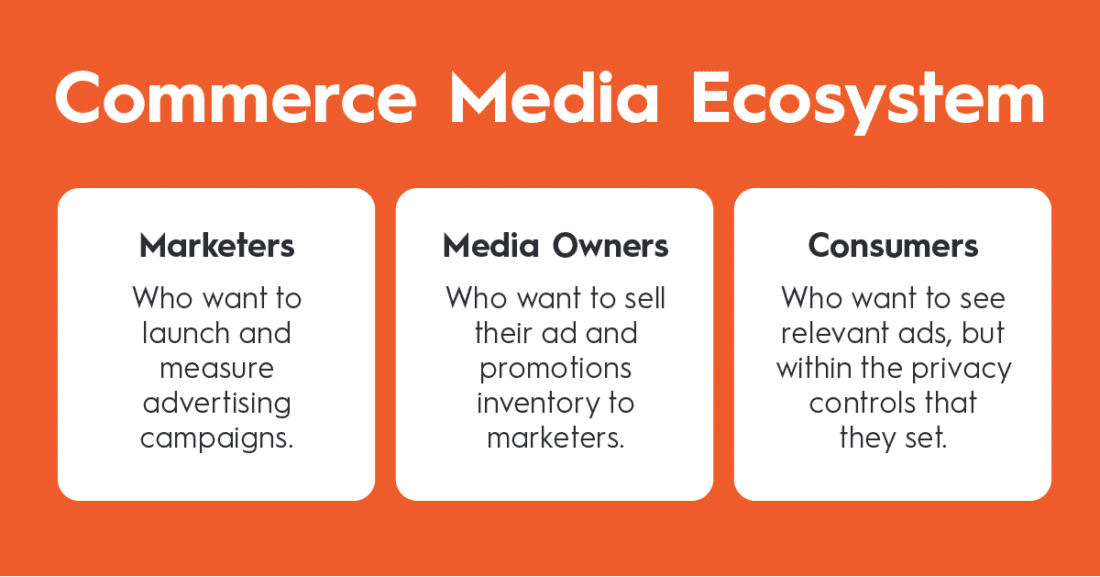The reality is, this is all about eyeballs. Where people spend time, that’s the opportunity to get in front of them.
Colin Barnard is Managing Director at Criteo, a global technology company that helps marketers and media owners reach their goals through the Commerce Media Platform. Criteo helps thousands of brands, publishers and retailers reach and monetize audiences. The company is also committed to supporting a fair and open internet that enables discovery, innovation and choice. An experienced digital leader, Barnard previously worked at Google and Peugeot leading sales and marketing teams.
In this episode of Velocitize Talks, Barnard shares his insights into how advertising is evolving due to new global data privacy laws and third-party cookie deprecation.
Advertising + Data Privacy (2:36)
Our power is in data. Not around people who browse online or who like things online but people who actually buy things online.

Criteo defines commerce media as a new approach to digital advertising that combines commerce data and intelligence to ”target consumers throughout their shopping journey and help marketers and media owners drive commerce outcomes (sales, revenue, leads).” That said, in May 2021, Criteo rebranded itself from a retargeting company to a commerce audience company. “It was time to recognize what’s in our core, what’s our real strength, says Barnard. “And our strength is the billions of identities and shoppers that we see every month.”
The company recognized that the current state of commerce media on the internet is fragmented into demand side platforms (DSPs); supply side platforms (SSPs); and retail SSPs which all operate separately. Due to new privacy laws and third-party cookie deprecation, there is a demand for a streamlined solution to reach audiences. This is the market that commerce media can address for marketers and media owners to best reach consumers.
The Cookie-less Future of Data (3:38)
We’re moving to a world where we’re going to be much more reliant on people who have a direct connection with their customers.

Due to advertising and data privacy concerns and governance, the challenge is helping brands connect with customers. In the past, third-party cookies were useful for advertisers to understand consumers’ behaviors in order to better serve them. But third-party cookies are going away. The advertising industry must evolve, says Barnard. Publishers and marketers who want to understand more about their audience must begin to value first-party data sets, or information they have been given by their users.
Since these consumers have opted in to share their data, companies are able to reach them with personalized ads, product recommendations, site experiences and messaging. This is the new era of programmatic advertising. Companies like the First-Party Media Network, which won the 2021 Digiday Media award for Best First-Party Data Strategy, are offering innovative ways to reach audiences.
Criteo also recommends using multiple campaigns including contextual, cohort and omnichannel to find new users, which will “help expand your first-party audiences now, before third-party cookies are gone.”
The Vanishing Audience (7:39)
It was easy to find the majority of your audience in one, two, three or four places. That has become harder and harder.

Today audiences have more media options than ever before. People have moved away from sourcing their information and entertainment from traditional media like broadcast (TV, radio, music, movies) and print (newspapers, magazines, books, signs, billboards).
According to Global Web Index, digital consumers spend 6.75 hours per day online, with more than three hours—51%—spent on mobile devices. This translates into consumers spending longer online than on TV, broadcast radio, game consoles and print press combined. “The reality is this is all about eyeballs,” says Barnard. “Where people spend time is the opportunity to get in front of them.”
Since people spend more time online, it’s led to an aggregation of audiences in many different places. That requires brands to go and find those consumers, which takes research, time and refinement.
Stay on Target (8:42)
I don’t think people will tolerate or understand why they’re going to see ads less relevant to them and be happy with that outcome.

Digital advertising is going through a big change. That change won’t just affect brands and media properties; consumers will also notice a shift in what they see. Once third-party cookies are gone, advertising and data privacy won’t go away for consumers—it will just change. Consumers will start seeing ads that are less relevant to them than the ones they were served up before.
Barnard doesn’t think consumers will accept or respond to that. In other words, advertisers will have to find a way to make ads just as relevant as before. “We’ll have to be a lot more creative and open and transparent about how we do that,” says Barnard.
According to Criteo, advertisers can use three audience-targeting scenarios to continue to reach and convert consumers: build an addressable audience, build cohort audiences, and contextual targeting. The best plan of action for marketers is to build these audiences and strategies now before third-party cookies are gone.
Risk & Reward (9:52)
Don’t be afraid of trying and failing because you learn more from your failures than you do from your successes.

Risk tolerance means accepting the unknown. According to Six Seconds, it’s about handling complexity and focusing on the future potential while keeping your emotional energy in check. Playing it safe has some advantages, but it also has a cost. “As long as you’re not going to bet the farm or do something so risky or beyond the bounds of acceptability,” says Barnard, “then what is there to lose?”
People who feel secure in their workplaces are more likely to take risks and go beyond their comfort zones. “I think people are often afraid of trying because they assume that their boss or someone in the organization will react in a very adverse way,” Barnard says. “The reality is I would much rather have tried and failed to do something and be recognized for having taken a risk and trying to innovate than to go for status quo.”
For more information on Criteo, check out their website and follow them on LinkedIn, Facebook, YouTube and Twitter at @criteo. To stay up to date with Barnard, follow him on LinkedIn.



0 Comments